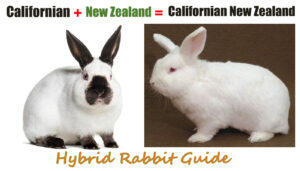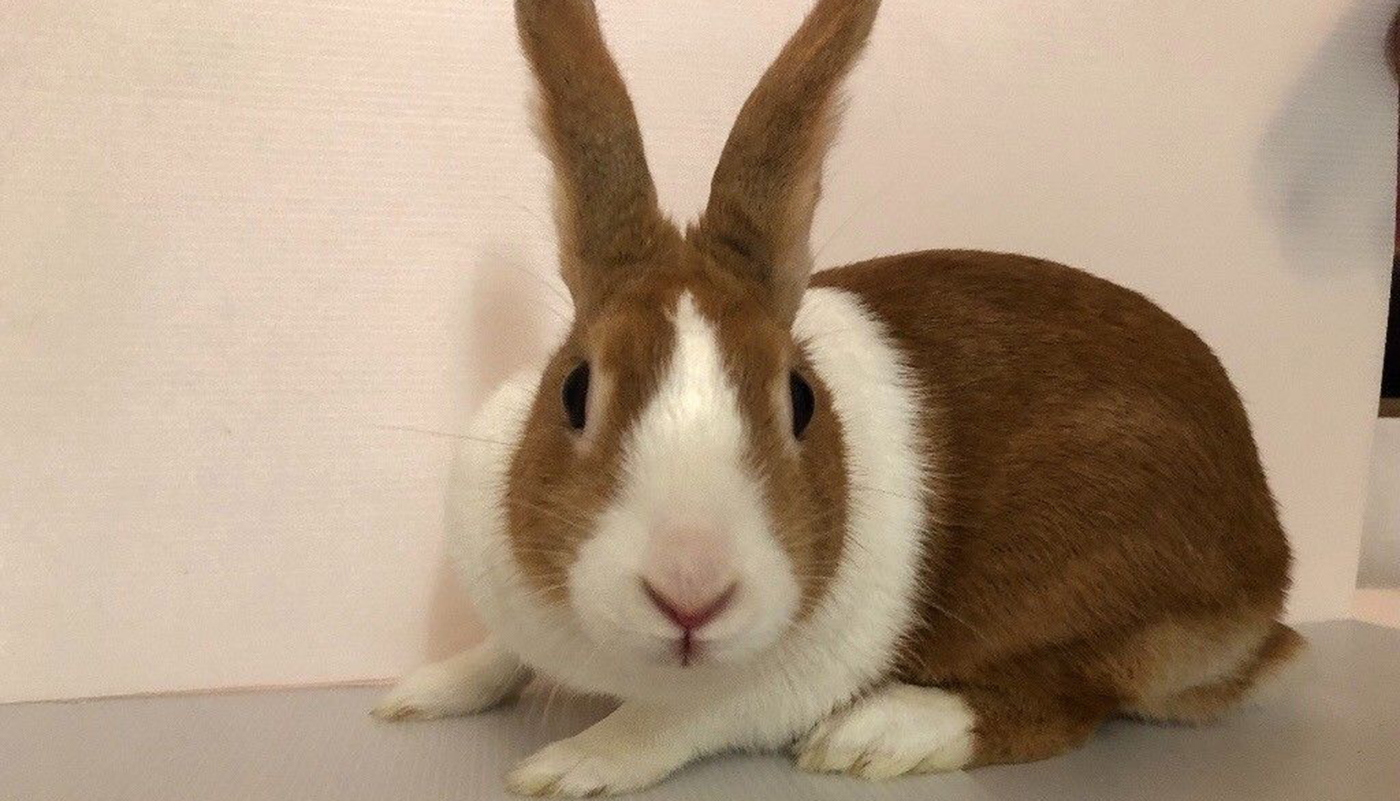
The Thrianta rabbit breed is a brilliant orange color rabbit with the cutest little face and curious nature.
They make excellent little pets and are quite a low maintenance breed in that their coats do not need too much attention or extra special care to maintain.
They are not an overly common breed but there are still quite a few places where a person can buy them from.
BREED PROFILE OVERVIEW
|
|
|---|---|
| Breed Name: | Thrianta |
| Other Names: | None |
| Country of Origin: | Netherlands |
| Breed Purpose: | Meat, show, and pets |
| Breed Size: | Small to medium |
| Breed Weight: |
Female/Doe: 5 to 6 lbs. Male/Buck: 5 to 6 lbs. |
| Breed Color(s): | They are a reddish orange color |
| Physical Appearance: |
The Thrianta rabbit breed is a small to medium sized rabbit that has a compact-type body shape. It has a well-rounded body with plump hindquarters and larger back feet than their front feet. They have medium length ears that are close together on their head but do not touch and stand erect. They have dark eyes and a small round face with a short neck. Their fur is thick, short and is a medium-length rollback soft to the touch. |
| Temperament: | Inquisitive, active, friendly, gentle and lovable. They make excellent companion rabbits due to their wonderful natures. |
BREED CHARACTERISTICS
- The Thrianta rabbits color is described as a fiery red that is maintained throughout their coat and has no other body marking on it.
- They have decent sized litters and the young usually open their eyes within 7 to 14 days. They make good mothers that have great maternal instincts.
- They are active and lively rabbits that do like to have other rabbits to socialize and play with.
| Good Pets? | They make good pets for first-time rabbit owners/breeders, elderly, families with children and they can be both indoor or outdoor rabbits. |
| Child Friendly? | Children should be supervised around animals and properly taught how to look after them and handle them. Rabbits can bite and scratch |
| Ideal Climate: | All climates – rabbits should never be left outside without proper shelter and housing that must be raised off the ground and predator safe. |
| Conservation Status: | Not Listed by the *ALC Status/Rarity: They are not listed by the American Livestock Conservancy. |
| Recognized by the ARBA? | Yes, they were recognized as a breed by the American Rabbit Breeders Association in 2005 |
| Rabbit Associations/Clubs: | American Thrianta Rabbit Association |
| Where to buy them? | You can check with the American Thrianta Rabbit Association or the USA Rabbit Breeders Directory is quite a useful resource for the breed. |
| Note: *ALC stands for American Livestock Conservancy | |
GENERAL INFORMATION
Their fur does not require any special grooming. For a slicker pelt, it is advisable to groom them ever two to three weeks. During the molting season, it is advisable to groom the Thrianta rabbits every week to remove stray hairs.
The Thrianta rabbit are quite lively and energetic little rabbits that need quite a bit of exercise and stimulation. It is a good idea to have a nice safe and secure run for them to play in and stretch their legs.
Toys, tubes and various obstacle courses for them to play with is a good way to help them expend some of their energy. They are really fun to watch at play.
They are also sociable animals that do like to have a friend or two to play with.
Regular health and critter check once a week or every second week is a good idea. This will help to keep your rabbit(s) in excellent condition and health. Grooming does not require a lot as their coats are low maintenance. But it is a good idea to give them a nice gentle brushing to help remove any excess hairs. It is also a good idea to check on the state of their teeth to ensure that they are not too long and causing the rabbit any discomfort.
Rabbits need a good diet of quality pellets that are filled with their daily nurtirional requirements. They also need fresh hay on a regular basis, the hay helps to control the growth of their teeth. They do love dandelions, cabbage and various fruits as a nice tasty treat.
As the Thrianta rabbit has quite a short coat it is not really at risk for most of the digestive problems long fur seem to cause rabbits with a longer coat. They can still get other ailments such as flystrike, ear mites or overgrown teeth. These can all be controlled/maintained or avoided altogether with the proper health and grooming care of the rabbit(s).
If you have two rabbits and do not want to breed them it is possible to spay female rabbits and neuter male rabbits. The females can be spayed as young as four months old, but vets prefer to wait until they are at least six months old before doing so. The young males can be neutered as young as found months old.
Rabbits, just like any other pet, should be dewormed on a regular basis. Check with your local vet for proper guidance on the administering of worm medication to your animals.
HISTORY
The brilliant organ colored Thrianta rabbit breed originated in the Netherlands with the breed being developed upon in Germany.
It was exported to the United Kingdom in the early 1980s and then to the United States in the 1990s.
The breed got is start with a breeder named H. Andreae in Holland who wanted to create a breed in honor of the House of Orange. In order to do this, he bred a number of different rabbit breeds such as the Tortoise Papillon and the Havana rabbit breeds. He decided to call the breed after the town in which he lived at the time which was Thrianta.
Just before World War Two in 1940, the breed was recognized by the Dutch as a breed in May of that year.
As food was scarce during the war most of the Thrianta rabbit breed was wiped out as it was used for its meat.
After the war, the few Thrianta rabbits that were left were then bred with German rabbits which created the breed of Thrianta rabbits that we know today and are the variety of Thrianta rabbits that were exported to the United States.
In 2005 the breed was officially recognized by the American Rabbit Breeders Association and a standard for the breed was set.
The breed is quite a popular rabbit breed with support and interest in them growing quite rapidly.
USEFUL LINKS
- American Rabbit Breeders Association
- Fur Commission USA
- North American Meat Institute
- American Livestock Conservancy
- Animal Shelter (ASPCA)
- American Veterinary Medical Association
- American Animal Welfare Society
- American Animal Control
- American Society of Animal Science
- United States Department of Agriculture
- United States Department of Agriculture – Rabbit Meat
 English Spot Rabbit – Everything You Need to Know
English Spot Rabbit – Everything You Need to Know Californian x New Zealand: The Ultimate Hybrid Rabbit Guide
Californian x New Zealand: The Ultimate Hybrid Rabbit Guide Netherland Dwarf Rabbit – Everything You Need to Know
Netherland Dwarf Rabbit – Everything You Need to Know Discover the Charming Lion Dutch: A Hybrid Rabbit Combining Lionhead x Dutch
Discover the Charming Lion Dutch: A Hybrid Rabbit Combining Lionhead x Dutch Beveren Rabbit – Everything You Need to Know
Beveren Rabbit – Everything You Need to Know Introducing the Adorable Mini Lop Rex: A Blend of French Lop and Mini Rex
Introducing the Adorable Mini Lop Rex: A Blend of French Lop and Mini Rex Silver Marten Rabbit – Everything You Need to Know
Silver Marten Rabbit – Everything You Need to Know Mini Lop Rabbit – Everything You Need to Know
Mini Lop Rabbit – Everything You Need to Know Naming Your Bunny – How to Name your Rabbit – Rabbit Names
Naming Your Bunny – How to Name your Rabbit – Rabbit Names Blanc de Hotot Rabbit – Everything You Need to Know
Blanc de Hotot Rabbit – Everything You Need to Know English Lop Rabbit – Everything You Need to Know
English Lop Rabbit – Everything You Need to Know American Havana Hybrid Rabbit: A Perfect Blend of American and Havana Breed
American Havana Hybrid Rabbit: A Perfect Blend of American and Havana Breed